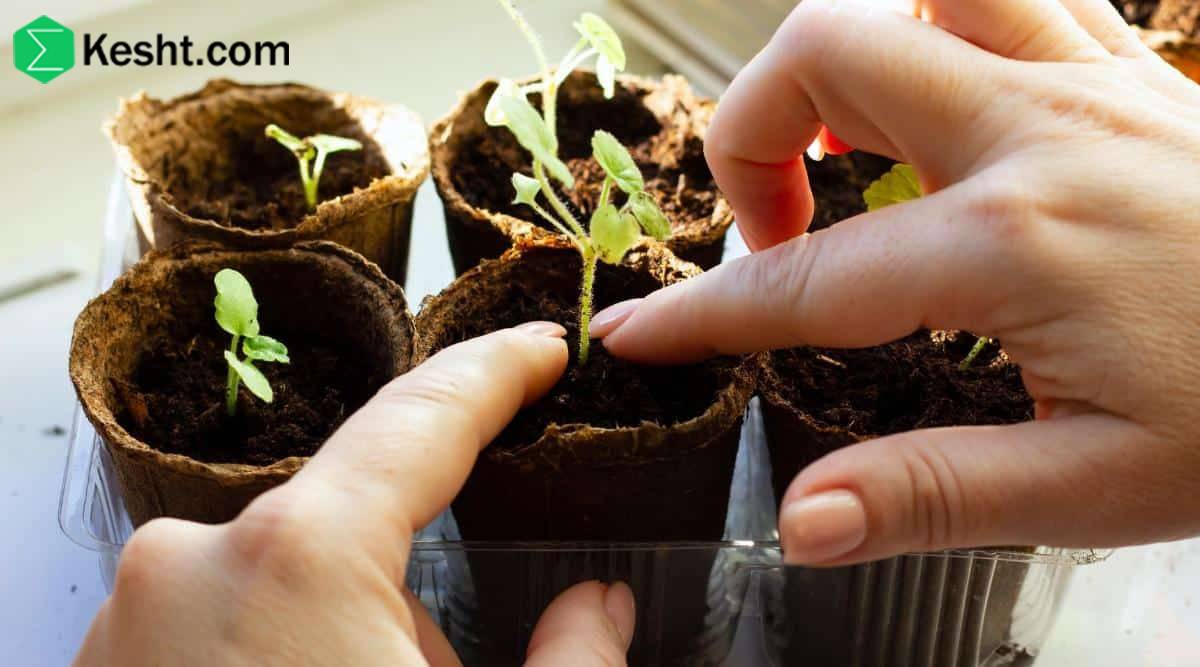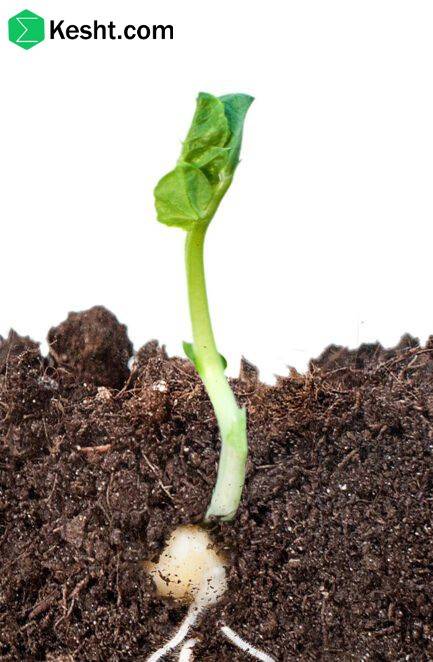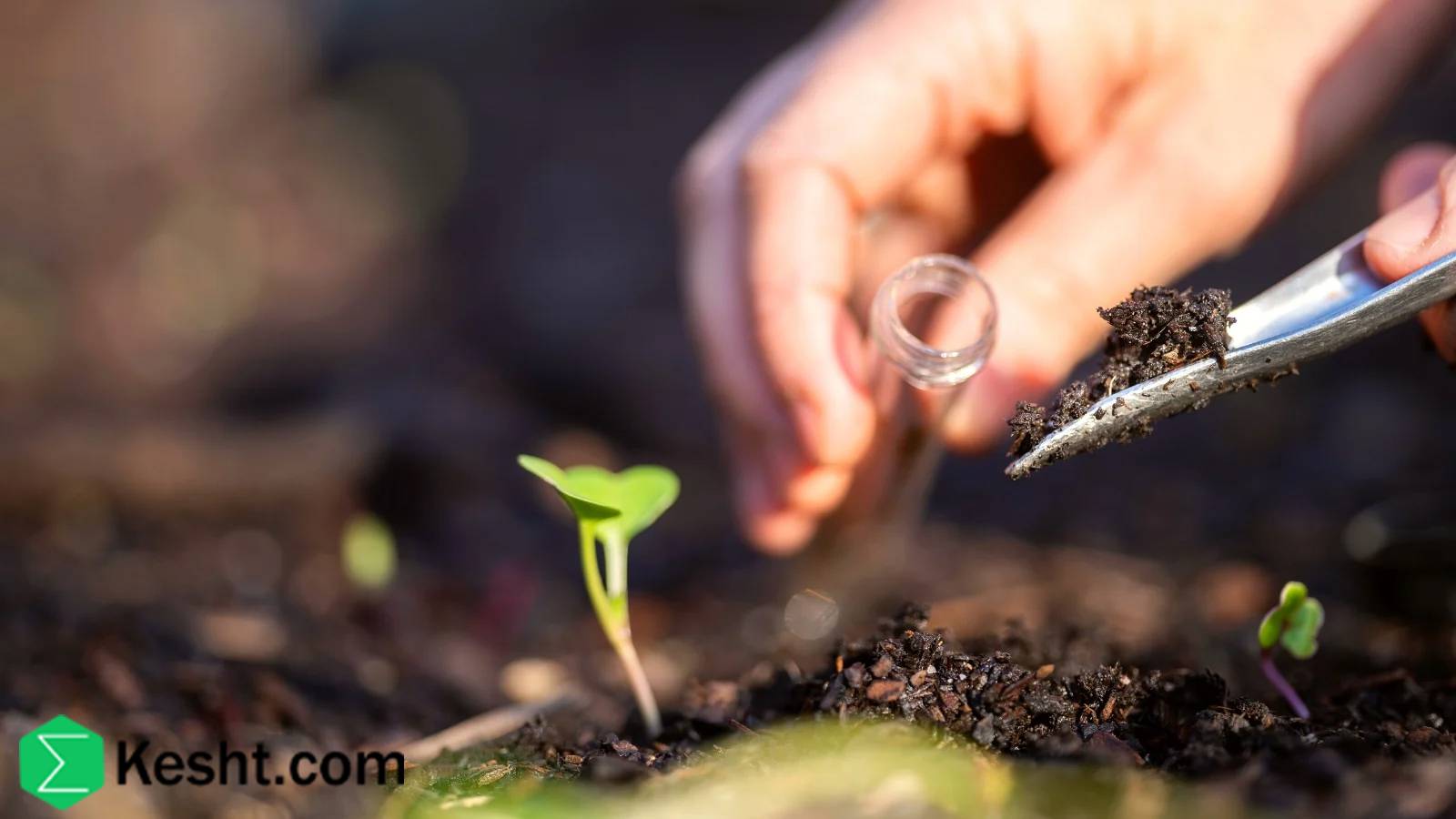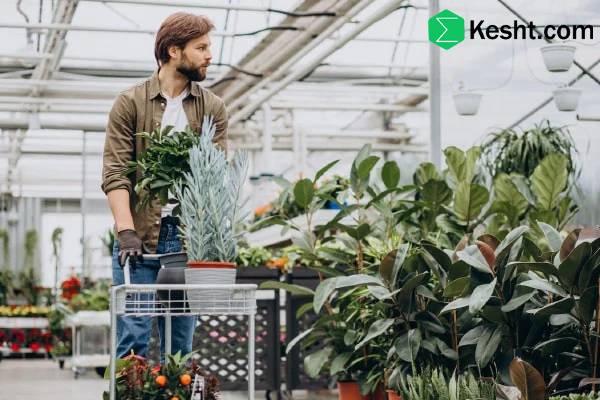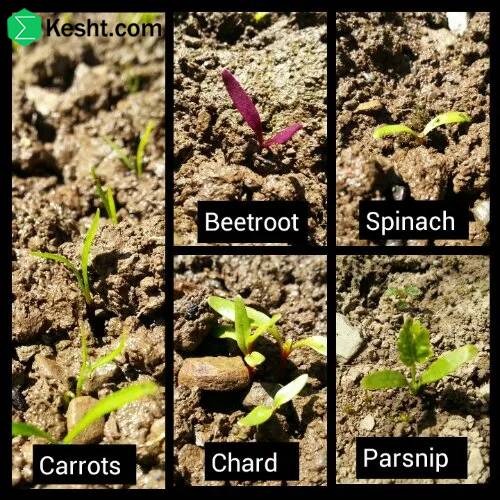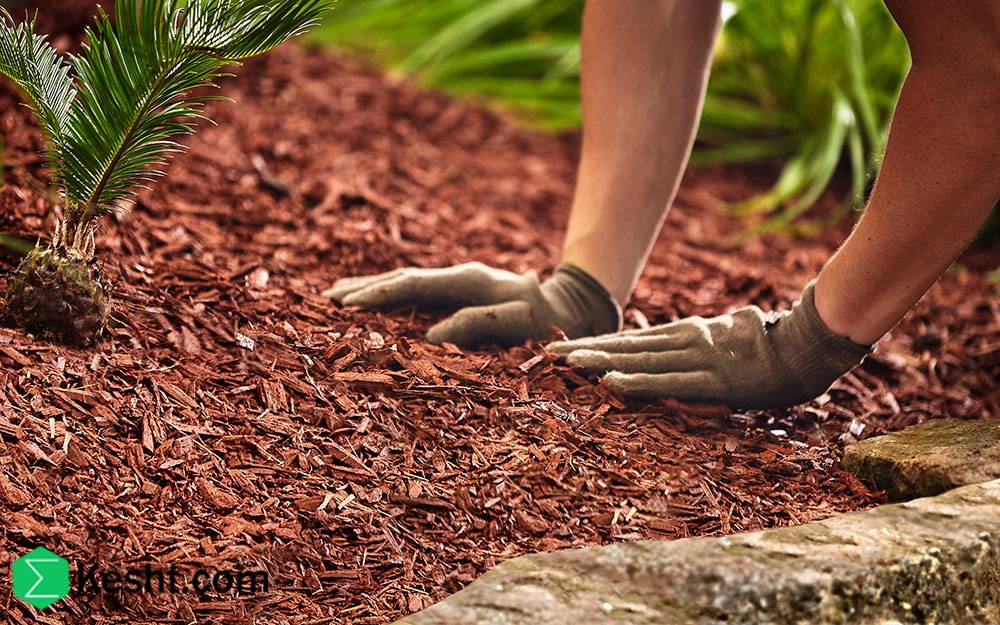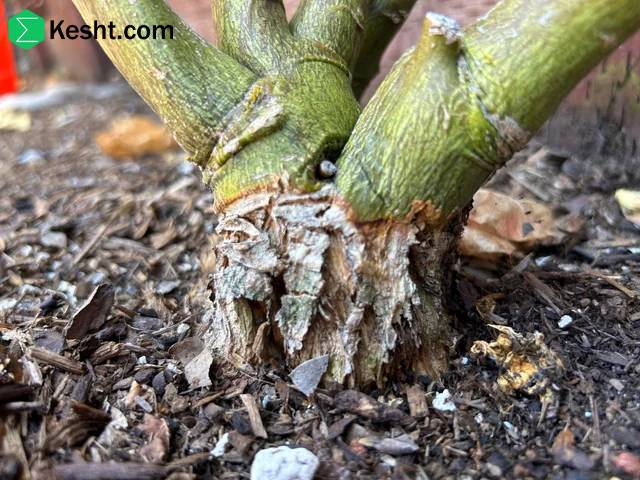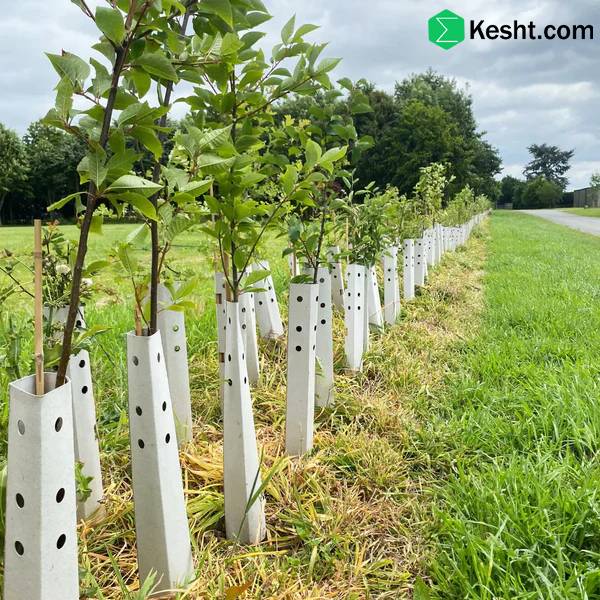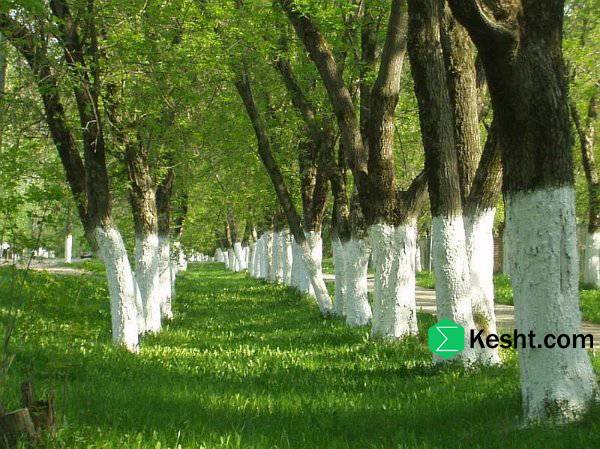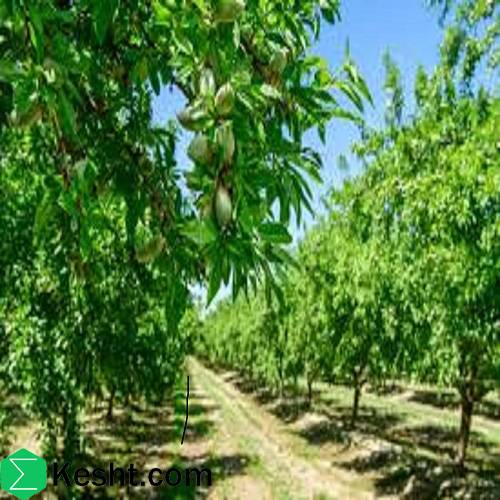Key Factors in Propagating Pistachio (Seed + Graft) Goal: Produce uniform, healthy, site-adapted nursery trees that establish quickly and enter stable bearing. This depends on three pillars: choosing the right rootstock, high-quality propagation material (seed/scion), and precise, hygienic execution at the right time. 1) Rootstock selection based on soil, water, and disease pressure - Test soil and water before anything else: salinity (EC), sodium/chloride, lime/pH, soil texture, depth and drainage. - Commonly used rootstocks (field summary): - Pistacia atlantica (beneh): very tolerant of drought and calcareous soils; moderate vigor; more susceptible to Verticillium than UCB1; suited to low-rainfall sites and heavier soils. - Pistacia integerrima: very vigorous, good Verticillium tolerance; more cold-sensitive; suited to warm regions. - Pistacia khinjuk (khinjuk): drought- and cold-tolerant; slower growth; calcareous-soil compatible. - Pistacia vera (seedling pistachio): excellent graft compatibility but more prone to some soilborne diseases; less recommended. - UCB1 (atlantica × integerrima hybrid): very vigorous, good Verticillium tolerance and medium-to-good salt tolerance, high uniformity; a leading choice in many orchards. - Note: Choose rootstock in light of climate (cold/heat), prior soil infection (especially Verticillium), and irrigation-water quality. 2) Propagation methods and their use - Seed propagation for rootstocks: industry standard for a penetrating taproot and site adaptation. - Bud grafting (T-bud/chip/patch) onto one-year rootstocks: main method to transmit the desired clonal scion. - Cuttings: difficult and inconsistent in pistachio; generally not commercial except for some rootstocks under mist with strong hormones. - Tissue culture/clonal: for select rootstocks (e.g., UCB1) in specialized nurseries; requires sensitive management. 3) Quality of propagation material - Rootstock seed: - From known, healthy mother trees; fresh, high viability. - Pre-sowing treatment: soak 12–24 h + moist cold stratification 4–6 weeks at 3–5°C to improve uniformity. - Hard shell: light scarification (a small crack) or shell removal improves uniformity; disinfect to limit fungal risk. - Seed disinfection: 0.5–1% sodium hypochlorite or a labeled fungicide, then rinse. - Scion wood: - From healthy, high-yield mother trees; one-year mature shoots. - Collected in winter dormancy, stored in a moisture-retentive bag at 1–4°C; precise labeling; surface-disinfect before use. 4) Containers, substrate, and root management - Pistachio has a strong taproot: use tall pots/root-trainers (30–40 cm) or upright nursery bags to prevent root circling. - Light, free-draining media (coco/perlite or sand/perlite); pH 6–7.5; irrigation water EC in nursery preferably < 1.5 dS/m. - Prevent J-rooting: plant at correct depth and keep the taproot straight; use aeration/air-pruning where possible. 5) Timing and temperature - Seed sowing: late winter to early spring (after stratification). - Bud grafting: - Summer T-budding: when the bark “slips” and days are warm-to-moderate (roughly late July–September, climate-dependent). - Chip budding: feasible in cooler periods (spring or late summer/early autumn). - Optimal callus formation temperature: ~20–30°C; extreme hot, dry weather (> ~38°C) reduces take rates. 6) Grafting execution and technique - Align cambium accurately; make clean cuts (sharp, disinfected tools); wrap with budding tape/Parafilm and seal edges. - Bud/graft height: typically 20–40 cm above soil (keeps away from soil moisture and eases training). - Aftercare: - Provide light shade and steady moisture; at 2–4 weeks, check and loosen/remove wraps (prevent girdling). - “Forcing the bud” late winter/early spring by heading the stock 10–15 cm above the bud; remove all shoots and buds below the graft. - Tie to a stake; whitewash exposed areas after bud growth. 7) Hygiene and disinfection (critical) - Disinfect grafting/pruning tools between trees with 70% alcohol or 0.5–1% sodium hypochlorite. - Nursery disease management: prevent damping-off (Pythium/Phytophthora) with excellent drainage, careful irrigation, and labeled fungicides if needed. - Use certified mother blocks/scion and nursery stock to avoid latent pests and nursery disorders. 8) Water and nutrition for nursery trees - Keep moisture uniform without waterlogging; heavy irrigations = root death/damping-off. - Light, continuous feeding: low-dose N after graft union takes; then balanced K/Ca for tissue strength. Avoid salting the medium. 9) Indicative success rates (under good conditions) - Seed viability after treatment: 70–90% (without pretreatments/hygiene, often 40–60%). - Summer T-budding: 75–95% take (with suitable temperatures and managed moisture). - Chip/patch budding: 60–85% depending on skill and conditions. - Hardwood/semi-hardwood cuttings: usually low/variable (10–40%); not cost-effective except in controlled systems. - Tissue culture/clonal: protocol-dependent; recommended only in specialized nurseries. 10) Common mistakes that lower success - Rootstock choice mismatched to soil/water (e.g., Verticillium-susceptible stock in infested soil). - Grafting at unsuitable temperatures or with dry/poor-quality scion wood. - Loose/poor wrapping (air gap between cambia). - Over-irrigation and poor drainage → damping-off. - Ignoring the removal of shoots below the graft → competition with the grafted bud and uneven growth. Compact calendar (Northern Hemisphere/Iran) - Jan–Feb: collect and store scion wood; stratify seed. - Mar–Apr: sow rootstock seed in nursery/tall containers. - Jul–Sep: T-bud onto one-year rootstocks when bark slips. - Mar–Apr (next year): force the bud; remove growth below graft; begin trunk training. Optimal environmental conditions for pistachio seed germination - Medium temperature: 24–26°C (day) with nighttime drop to 18–22°C - Medium moisture: uniform and moist (not saturated), about 60–70% of water-holding capacity - Air/oxygen: light, airy substrate; excellent drainage - Salinity in water/medium: irrigation EC < 1.0 dS/m, medium EC < 1.5 dS/m - Medium pH: 6.0–7.5 (optimum ~6.5–7.2) - Light: not required for germination; a thin soil cover is sufficient - Pretreatment: soak 12–24 h + moist cold stratification 4–6 weeks at 3–5°C for high uniformity Practical protocol (step by step) 1) Seed preparation - Remove the green hull completely; you may leave the hard shell or crack/remove it gently to speed germination. - Disinfect seeds: 0.5–1% sodium hypochlorite for 10 min (or 70% alcohol for 30 s + rinse), then rinse thoroughly with clean water. 2) Soak and leach inhibitors - Soak 12–24 h in fresh water (change water 2–3 times) for imbibition and to wash inhibitory compounds. 3) Moist cold stratification (for high uniformity) - Place moist seed in a perforated bag/cloth or between damp paper at 3–5°C for 4–6 weeks. Keep moist, not wet. Aerate weekly and check for mold. - Speed option: soaking in GA3 (gibberellic acid) 250–500 ppm for 12–24 h can shorten stratification and improve uniformity (optional). 4) Substrate and containers - Light, sterile mix: e.g., coco peat:perlite 1:1 or washed sand:perlite 1:1. - Tall containers (root-trainers 30–40 cm) or nursery bags to prevent root circling; ensure ample drainage. 5) Sowing - Depth: 2–3× seed thickness (typically 1.5–3 cm). For de-shelled seed, 1.5–2 cm is enough. - Orientation: horizontal or with the pointed end downward; cover lightly and firm gently. - Top the surface with a thin layer of washed sand to maintain even moisture and reduce disease. 6) Germination conditions - Temperature: steady 24–26°C (under-bench heat helps in cool rooms); nights 18–22°C. - Moisture: keep medium moist but unsaturated; light, frequent irrigations or gentle misting on the surface. A clear cover helps retain humidity—vent daily. - Aeration: prevent standing water; keep drain holes open; use porous media. - Light: not needed for sprouting; after cotyledons emerge, provide gentle indirect light. 7) After emergence - As soon as root/shoot emerges, slightly reduce moisture and increase ventilation (lowers damping-off risk). - Light: 12–14 h of gentle light (~150–250 μmol m⁻² s⁻¹) or diffuse sun. - Feeding: 7–10 days after leaflets open, apply a very dilute nutrient solution weekly (N 30–50 ppm); keep medium salinity low. Quality indices for water/medium - Irrigation water EC: preferably < 1.0 dS/m (TDS < ~650 ppm). High chloride/sodium reduce germination. - Water/solution pH: 6.0–7.2 is better for micronutrient uptake. - Root-zone temperature: keeping 22–26°C improves speed and uniformity. Timing and expected success - With 4–6 weeks stratification: first roots appear 7–14 days after sowing; 80–95% emergence (with good hygiene). - Without stratification: later, uneven emergence (3–6+ weeks) and lower percentages. Quick troubleshooting - Rot/damping-off: medium too wet or poor drainage → lighten irrigation, add perlite/sand, vent daily, disinfect seed/containers. - Uneven sprouting: insufficient stratification or wrong temperatures → repeat stratification or set 24–26°C. - Empty kernels/embryo death: old/poorly stored seed → use fresh, heavy seed; do a float test (discard floaters). - High salinity: measure EC of water/medium; irrigate with lower-EC water. Guide to selecting and preparing soil for planting pistachio nursery trees Goal: Rapid establishment, deep rooting, uniform growth, and reduced risk of salinity/waterlogging/disease. Proper pre-plant soil prep “insures” the first 5–10 years. Key soil parameters (recommended targets) | Factor | Target range | Technical note | | Texture | Sandy loam to light loam–clay loam | Good drainage + balanced moisture retention | | Effective soil depth | ≥ 1.5 m (preferably 2 m) | No hardpan (caliche/compaction) in the root zone | | Drainage/infiltration | Good; fast field infiltration | In a 30 cm pit, the second fill should drain in ≤ 2–3 h | | Water table | > 1.5–2 m below surface in irrigation season | Shallow water table = root rot risk | | Soil salinity (ECe) | < 4 dS/m for seedling establishment | Pistachio is tolerant, seedlings are not | | Water salinity (ECw) | Preferably < 2 dS/m for seedlings | With saltier water, design a leaching fraction | | Sodicity | Water SAR < 6–8; soil ESP < 10–15% | Above these: gypsum + leaching and better drainage | | pH | 7.0–8.0 (tolerable to ~8.2) | Very high pH → manage Fe/Zn micronutrients | | Equivalent CaCO3 | Acceptable if present | Break or bypass hard calcareous layers | | Boron (water) | < 1 mg/L for seedlings | Higher levels risk leaf burn | Practical steps (3–6 months before to planting day) 1) Survey and map soil and water - Soil pits/ profiles at least every 3–5 ha: depth, texture, hard layers, moisture, reductive odor (poor aeration). - Lab samples at 0–30, 30–60 (and if needed 60–90 cm): ECe, pH, SAR/ESP, CaCO3, B, natural gypsum, P/K, organic matter. - Irrigation water analysis: EC, SAR (Na, Ca, Mg), HCO3/CO3, chloride, boron. - Map problem spots (saline/sodic/shallow) for targeted amelioration or adjusted planting/rootstocks. 2) Drainage and field surface design - Surface: gentle slope 0.3–0.5% toward outlets; field ditches to convey stormwater. - Subsurface (if needed): tile drains in sites with shallow water table or clay layers; spacing/depth per local design. - Raised beds/ridges in heavy soils: 30–50 cm ridges to keep crowns away from prolonged wetness. 3) Salinity/sodicity correction - If SAR/ESP is high: apply agricultural gypsum (CaSO4·2H2O) + planned leaching. Lab should set exact rates by CEC/ESP; typical field rates are 3–10 t/ha to drop ESP a few points in the top 30 cm (texture- and gypsum-quality–dependent). - Leaching: after broadcasting gypsum, run several heavy irrigations with adequate outflow. In-season, design a 10–20% leaching fraction when ECw is higher. - For bicarbonate/alkaline waters: set an acid injection plan (or acidifying fertilizers) with an irrigation specialist; safety and proper equipment are essential. 4) Physical improvement - Break compaction/hard layers: subsoiling/chiseling at optimal soil moisture (neither too wet nor too dry) 40–60 cm deep (or to the top of the pan). Cross two passes on compacted land. - Smooth microrelief: light laser leveling for uniform water distribution and to prevent ponding. 5) Build organic matter and base fertility - Well-matured, low-salt compost (EC < ~4 dS/m, C:N ~12–20): 10–20 t/ha in the planting strip (not whole field), mixed into the top 20–30 cm. In humid/infested regions, avoid contaminated compost. - Pre-plant P/K per soil test: band P in a 15–25 cm root zone band; in K-poor soils, lightly incorporate K near the surface. - Calcium: in soft waters/low-Ca soils, periodic calcium nitrate after planting helps. 6) Weed and soilborne disease management - Non-chemical: solarize the planting strip (clear plastic 30–50 μm for 4–6 weeks in peak heat) + tool/manure hygiene. - Biological: green manure/biofumigation with mustards/clovers, incorporated 3–6 weeks before planting in suitable climates. - Rotation and avoidance: steer clear of fields with Verticillium/Phytophthora; choose tolerant rootstocks (e.g., UCB1) in high-risk sites. 7) Irrigation bed preparation - Prefer two drip lines per row for uniform wetting and local salt leaching; emitter spacing 50–75 cm (texture-dependent). - Flush lines and verify discharge/uniformity before planting. 8) Pre-irrigation and soil settling - 1–2 “pre-irrigations” to settle soil and activate gypsum/fertilizers; keep workable moisture to planting day (neither waterlogged nor powder-dry). 9) Planting-hole principles - Make a large hole but backfill with native soil (avoid filling holes with soft, foreign mixes that trap roots). - Plant on ridges in heavy/cold soils; set the crown 3–5 cm above final grade. - Root correction: straighten any J-rooting and lightly trim broken roots; irrigate in immediately. - Form a small basin; in dry climates, apply a light organic mulch (keep off the trunk). Quick field tests (before decisions) - Infiltration test: dig a 30×30×30 cm hole and fill with water; after it drains, fill again. If the second fill takes > 4 h → poor drainage; use ridges/drains/subsoiling. - Spot salinity: with a handheld EC meter, check shallow drainage water; mark high-EC spots on a map and correct locally. Key irrigation-engineering notes - With saltier water, include a 10–25% leaching fraction in the irrigation plan so salts are pushed below roots. - With high HCO3 water, controlled acid injection or acidifying fertilizers (e.g., ammonium sulfate) help manage root-zone pH; monitor pH and EC through the season. Costly mistakes (and better choices) - Amending only the planting hole, not the row/field → severe heterogeneity and restricted rooting. Better: continuous strip/row corrections. - Planting in wet/heavy soil → compaction and poor aeration. Better: wait for field capacity moisture, then subsoil/build ridges. - Ignoring water SAR/soil ESP → gradual sodification. Better: test water + gypsum + leaching design. - Using raw, salty manures → root burn/weeds. Better: only well-matured, low-salt compost. Irrigation and nutrition program for early pistachio growth (seedlings; years 1–2) Goal: Fast root establishment, uniform canopy growth, avoiding salinity/waterlogging stress, and stepwise nutrition without triggering excessive watersprouts. Operating assumptions - Sample orchard layout: 6×6 m (≈ 278 trees/ha) - Irrigation: twin drip lines per row; each tree starts with 2 emitters of 4 L/h (expand to 3 by late spring of year 2) - Target wetted depth: year 1 = 30–40 cm; year 2 = 40–60 cm - Climate: semi-arid; figures for loam, adjust by texture Section 1) Irrigation in stages Principles - Keep root-zone moisture uniform (60–80% of available water) without saturation. - More frequent, smaller sets are better than infrequent, heavy sets (reduce Phytophthora risk). - Field check with auger/trowel: 6–8 h after each irrigation, check wetted depth and adjust run time. Suggested pattern (for 2 × 4 L/h per tree) - Spring (post-planting/leaf-out) - Sandy loam: 3–4 sets/week × 45–60 min (≈ 6–8 L/set) - Loam: 2–3 sets/week × 60–75 min (≈ 8–12 L/set) - Loam–clay loam: 1–2 sets/week × 75–90 min (≈ 12–15 L/set) - Early summer (as heat rises) - Sandy loam: 4–6 sets/week × 60–75 min (≈ 8–12 L/set) - Loam: 3–4 sets/week × 60–90 min (≈ 12–18 L/set) - Loam–clay loam: 2–3 sets/week × 90–120 min (≈ 16–24 L/set) - Year 2 - Add one more 4 L/h emitter by late spring (total 3), or increase run times by 20–30%. - Target: 40–60 cm wetted depth each 1–2 day cycle (summer). Quick adjustments - Wetted depth < target → add 15–20 min, or one more set per week. - Over-wet/surface runoff → reduce duration by 15–20% or lengthen interval between sets. - Common mistake: heavy, infrequent irrigations in heavy soils → compaction and root disease. Simple time formula - Water delivered per tree (L) = number of emitters × discharge (L/h) × time (h). - Example: 2 emitters × 4 = 8 L/h. For a 10 L target → time ≈ 1.25 h. Section 2) Nutrition (fertigation/foliar) in early years Principles - Apply nitrogen in small, split doses; avoid heavy N early (first 2–3 weeks after pruning/planting). - Plan P and K by soil test; in low-fertility soils, foundational amounts were applied pre-plant. - Keep fertigation tank EC low (preferably < 1.5–2.0 dS/m at line outlet) and always flush line ends. Reference seasonal amounts (adjust via soil/leaf tests) - Year 1: nitrogen 20–40 kg N/ha (≈ 70–145 g N/tree/year) - Year 2: nitrogen 40–80 kg N/ha (≈ 145–290 g N/tree/year) - Potassium (if soil is low/medium): 20–40 kg K2O/ha in years 1–2 (split from early growth to early summer) - Phosphorus: in low-P soils 15–30 kg P2O5/ha (preferably pre-plant or early season as MAP/phosphoric acid in small doses) Suggested weekly N splits - Year 1 (target ~30 kg N/ha; 12–16 weeks of fertigation) - Weeks 1–4 (after leaf-out): 1.5–2.0 kg N/ha/week - Weeks 5–8: 2.0–2.5 kg N/ha/week - Weeks 9–12: 2.0–2.5 kg N/ha/week - Weeks 13–16: 1.0–1.5 kg N/ha/week - Rough per-tree equivalent at peak: 3–6 g N/tree/week - Year 2 (target ~60 kg N/ha) - Weeks 1–4: 2.5–3.0 kg N/ha/week - Weeks 5–8: 3.0–3.5 kg N/ha/week - Weeks 9–12: 3.0–3.5 kg N/ha/week - Weeks 13–16: 2.0–2.5 kg N/ha/week - Rough per-tree equivalent at peak: 6–10 g N/tree/week Sample fertigation sources (adapt as needed) - N sources: - Calcium nitrate (15.5-0-0): boosts Ca early; keep in a separate tank from sulfates/phosphates. - Urea (46% N) or UAN: neutral/slightly acid; highly soluble. - Ammonium sulfate (21-0-0-24S): mildly acidifying for alkaline waters. - K sources: - Potassium nitrate (13-0-46): supplies N+K during peak growth. - Potassium sulfate (0-0-50): in a tank separate from calcium nitrate. - P sources: - Phosphoric acid or MAP (12-61-0) early in the season in small doses. - Mixing notes: - Do not mix Ca(NO3)2 with phosphates/sulfates in one tank (precipitation). - Tank pH 5.5–6.5 is ideal; always jar-test first. Micronutrients (targeted foliar) - Zinc (ZnSO4 0.5–1% + low-biuret urea 0.5–1%) at early leaf-out if deficient or by history. - Boron (boric acid 0.1–0.2%) 7–10 days before bloom; use cautiously and spot-test. - Iron (EDDHA) via root zone in calcareous soils with strong interveinal chlorosis on young leaves. Section 3) Example operating scenario - Conditions: loam soil, semi-arid climate; 2×4 L/h in year 1; 3×4 L/h from late spring year 2. - Year 1 - Irrigation: - April–May: 2–3 sets/week × 60–75 min (8–12 L/set) - June–July: 3–4 sets/week × 60–90 min (12–18 L/set) - Fertigation (N target ~30 kg/ha): - Weekly 2–2.5 kg N/ha from leaf-out to mid-summer (e.g., 4.3–5.4 kg urea/ha) + from June 1–1.5 kg K2O/ha (e.g., 2–3 kg KNO3/ha) - In the first month, supply part of N as calcium nitrate (support Ca and tissue quality). - Year 2 - Irrigation: - May: 3×4 L/h → 2 sets/week × 60–90 min (≈ 36–54 L/tree/week) - June–July: 3–4 sets/week × 60–90 min (≈ 54–72+ L/tree/week); target 40–60 cm depth - Fertigation (N target ~60 kg/ha): - Weekly 3–3.5 kg N/ha at peak (e.g., 6.5–7.6 kg urea/ha) + 2–3 kg K2O/ha from onset of strong vegetative growth - In alkaline waters, supply some N as ammonium sulfate to manage root-zone pH. Monitoring and adjustment - Soil moisture: if possible, install granular/capacitive sensors at 20 and 40 cm; in high heat, use more frequent, shorter sets. - Mid-summer leaf analysis and irrigation-water nitrate/EC: adjust injected N for N in source water. - Growth observations (rules of thumb): - Very lush, soft growth/many watersprouts → reduce N 15–25% and use more frequent, smaller irrigations. - Weak growth, small pale leaves → increase N/overall K 10–20% (after ruling out salinity/water issues). Costly mistakes (and better alternatives) - Heavy, infrequent irrigations in heavy soils → compaction/root rot. Better: more frequent, smaller sets. - Opening the season with high N doses → many watersprouts, sunscald susceptibility. Better: stepwise, low-dose N. - Poor fertilizer mixing → precipitation and emitter clogging. Better: two tanks (separate Ca from P/S). - Ignoring EC of water/medium → salt buildup and leaf burn. Better: maintain a 10–20% leaching fraction with saline water.
Key factors in pistachio seedling propagation (seed + grafting)
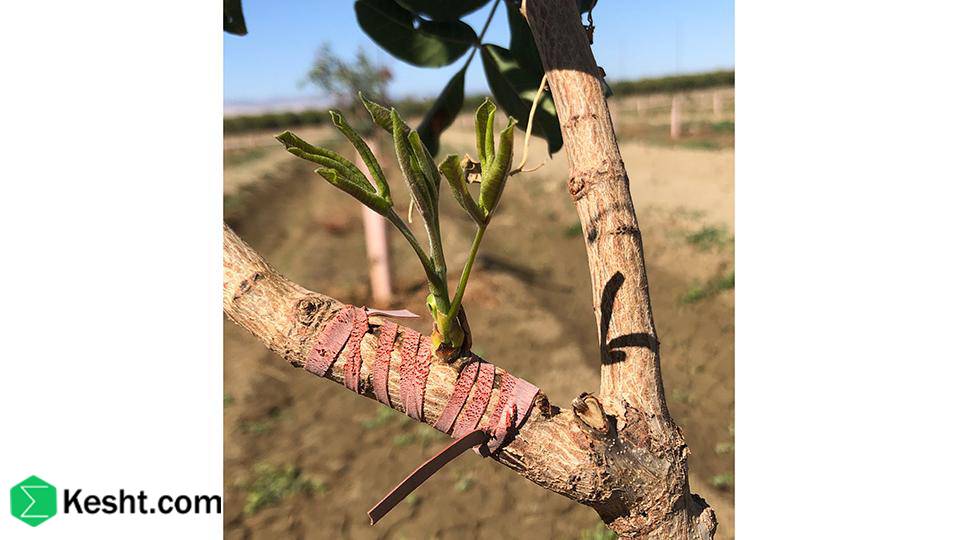
Related Articles
